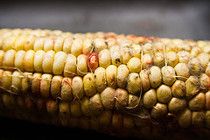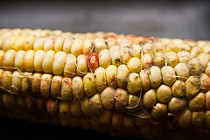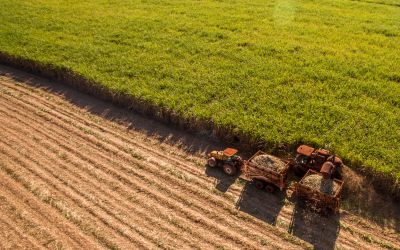Adapting to climate change for food safety
Climate change is having an effect on the safety of the world's food supplies and unless action is taken the situation will worsen, said an expert at this year’s meeting of the American Association for the Advancement of Science (AAAS) (17-21 February).

 Climate change is having an effect on the safety of the world's food supplies and unless action is taken the situation will worsen, said an expert at this year’s meeting of the American Association for the Advancement of Science (AAAS) (17-21 February).
Climate change is having an effect on the safety of the world's food supplies and unless action is taken the situation will worsen, said an expert at this year’s meeting of the American Association for the Advancement of Science (AAAS) (17-21 February).
Ewen Todd, a Michigan State University professor of advertising, public relations and retailing, organized a session titled "How Climate Change Affects the Safety of the World's Food Supply" at which several nationally known experts warned that food safety is already an issue – with the spread of mould and pathogens causing food poisoning and disease – and the situation will worsen unless climate change is confronted.
"Accelerating climate change is inevitable with implications for animal products and crops," said Todd. "At this point, the effects of climate change on food safety are poorly understood," he added.
Todd said there are already a number of examples of climate change taking its toll on the world's food supply. Vibrio, a pathogen typically found in warm ocean water, is now becoming more common in the north as water temperatures rise. Mycotoxins – moulds that can cause illness – are also on the increase.
Mycotoxins are being caused by the increase in extreme weather, such as drought and heavy rain. In some areas crops are being devastated, resulting in higher prices and hunger.
"Where you have drought and starvation there can be a mycotoxin problem," said Todd. "That's because people will store their meagre resources of crops for longer than they should."
Speakers at the symposium included Raymond Knighton of the U.S. Department of Agriculture's National Institute of Food and Agriculture; Sandra Hoffman of the USDA's Economic Research Service; and Cristina Tirado from the University of California, Los Angeles.
Delegates discussed tackling the problem, and emphasised the need for food safety education to control the spread of mould and pathogens.
The food safety issue is highlighted by the Chartered Institute of Environmental Health (CIEH), which states that health problems can originate from various causes impacted by climate change. Effects include an increase in pest contaminants, an increase in food poisoning cases, faster multiplication of bacteria in animal feeds, algal blooms contaminating seafood, and heavy rainfall washing farmland contaminants into reservoirs.
Shorter growing seasons and a general loss of food production, leading to food shortages, have already led to crises across the world, including in the north China plain, and expected across the Middle East and North Africa, following the political uprising that has unfolded in the past few weeks.
A report, ‘Climate Change: Implications for Food Safety’ (2008), conducted by Lee-Ann Jaykus, Marion Woolridge, and a team of researchers from the Food and Agriculture Organisation (FAO), suggests ways in which countries can proactively promote strengthening food safety management programmes, which could also improve food security.
The report anticipates that hazards along the food chain can be effectively controlled in the context of a changing environment by educating people on the emerging microbiological hazards at all stages of the food chain, including using mathematical modelling; new tools for monitoring or screening programmes for foodbourne pathogens and strengthened animal health surveillance.
The CIEH suggests bolstering of existing capacity, and creating new capacity, in national-level policy, to avoid mycotoxin and algal bloom contamination.
Monitoring and preparation for emergency are suggested across the board, to improve guidance and food control systems. The CIEH highlights the need for many countries to intensify their efforts to implement programmes of food safety management that are in line with FAO/WHO guidance.
Image: stevendepolo | Flickr






